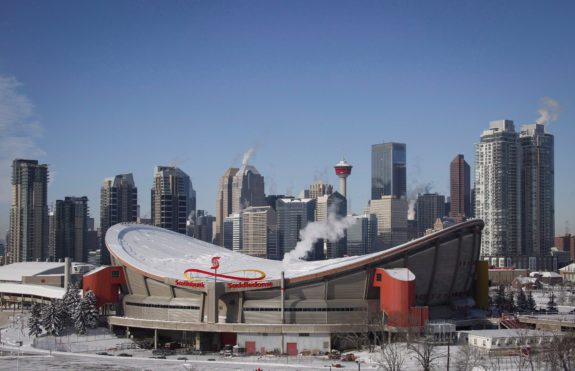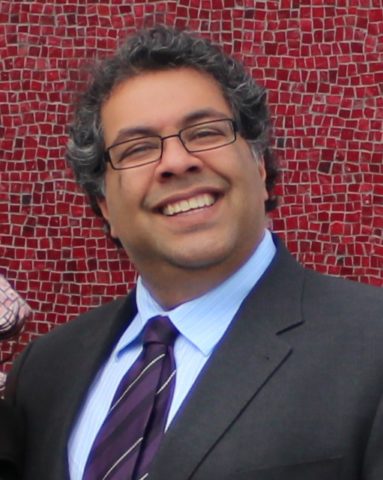Calgary city council will discuss Monday how to prioritize and pay for mega-projects, including an event centre that would be the new home of the NHL’s Calgary Flames.
The event centre, estimated to cost between $550 million and $600 million, is one piece in a larger development puzzle proposed for the Rivers District east of downtown.
The city calls it an “event centre” instead of an arena because of the desire for the building to house more than sports.
The planned site of the new venue is just north of the 36-year-old Saddledome.

The Calgary Sports and Entertainment Corporation, which owns the Flames, abruptly withdrew from financial negotiations with the city in 2017 when team president Ken King called them “spectacularly unproductive.”
New Talks “Continue to Progress”
A council committee struck last year to revive an arena and the Flames are talking, but not yet about financial terms, according to committee chair Coun. Jeff Davison.
“Talks continue to progress,” Davison said.
“In the talks we’ve had with the Flames, it’s really been about their request for two things. Number one is a vision and I think with the Rivers District master plan, that vision is alive.
“The other thing they’ve asked for is to come to them with a proposal. As a city, we’re really preparing our side of what that would look like before we start going out to partners.”
The city hired the accounting firm Ernst and Young to assess the collective economic impact of three projects proposed for the Rivers District — the event centre, a $500-million expansion of a convention centre and a $418-million upgrade of an arts and theatre facility.

The study, which was presented to committee Friday, forecasted the cumulative economic impact of the three projects on the city’s GDP at $168 million annually.
The spectre of the Flames leaving Calgary arose in chambers Friday, led by Calgary Municipal Land Corporation chair Lyle Edwards asking what the economic fallout would be.
But city manager Jeff Fielding urged the committee not to make that part of Monday’s discussion.
“I think it’s a really important conversation today and conversation that council will have in the coming weeks, is that you not use a threat of the team leaving as part of your discussion,” he said.
Related THW Content: Bringing Back NHL Arena Nicknames
“That would be totally inappropriate because it’s speculation and it puts everybody in a defensive position.”
Davison said losing its NHL team would not be good for the city.
“When you look to the social fabric of the city, I think we all know what would happen if the Flames left,” he said.
“Winnipeg is one of those places that it was certainly a detriment to the city for many, many decades when that team left. They’ve got a team back now and you see the development that comes along with it.”
New Arena Election Fodder in Nenshi Reelection

A new arena became civic election fodder in September, 2017, when CSEC broke off negotiations within days of Mayor Naheed Nenshi kicking off his campaign for a third term.
Nenshi talked about a new arena as part of his vision for the downtown east side’s revitalization.
He has one vote on council, although his voice carries influence as mayor. And it was his voice countering King’s in the public back and forth over who should pay how much for a new arena.
King said then “we’ll just go on and run our business and do what we can to operate and try and figure out what the future will look like at some point later.”
Relations thawed last year when the Flames engaged with the new event centre committee and provide architectural renderings to the CMLC.
“The thing we’ve learned is that the last time negotiations started, they came to an abrupt halt,” Davison said. “It was a very divisive project because I think it was a very reactive one.
“This time, we’ve done our due diligence and we’re being very proactive about how we would approach a new event centre, what that would look like.
“There’s multiple partners in this greater Rivers District master plan. We want an event centre, but we want an anchor tenant, so obviously one of the partners stands out as being part and parcel to one of the facilities within the district.”
Donna Spencer, The Canadian Press